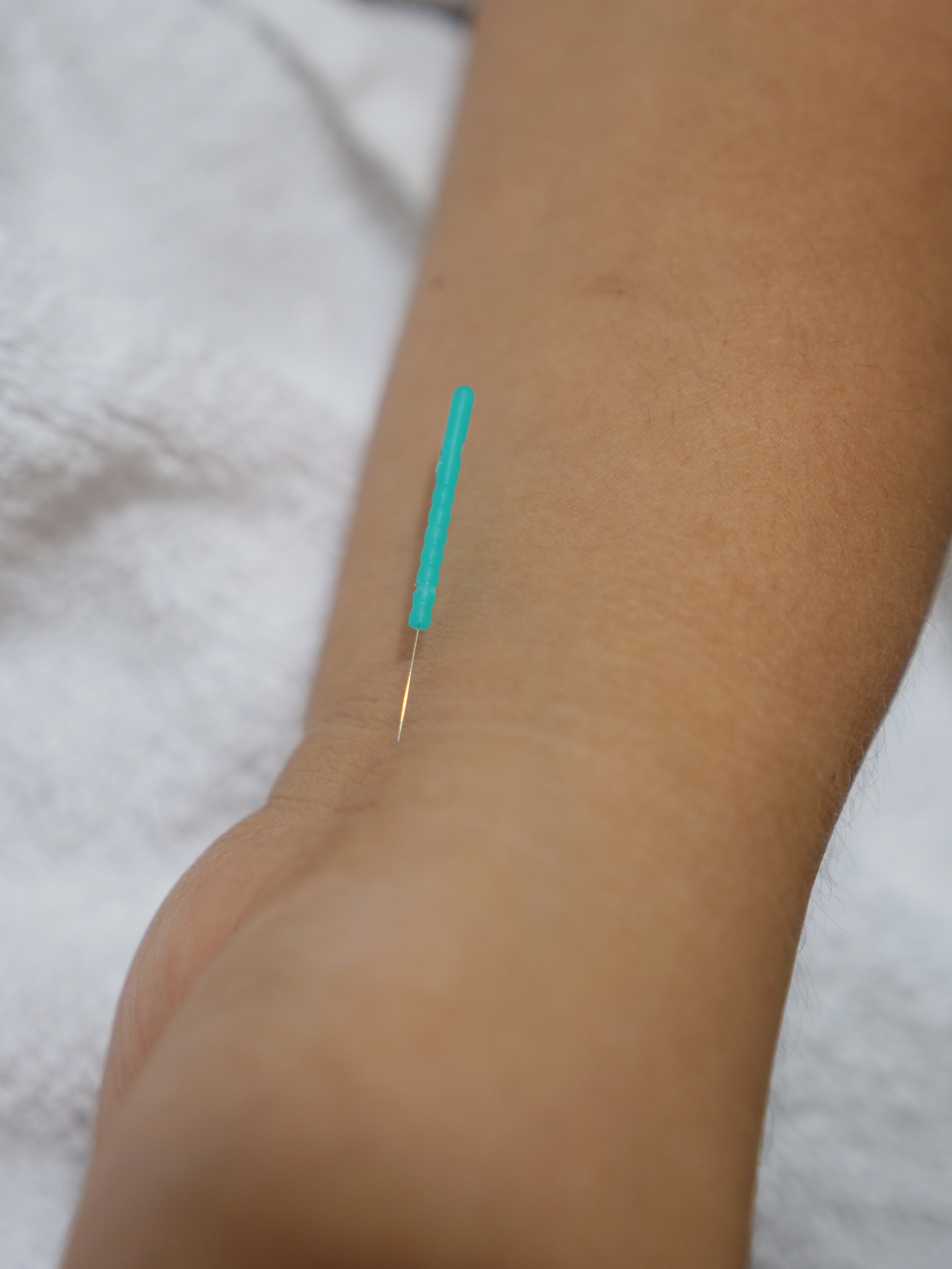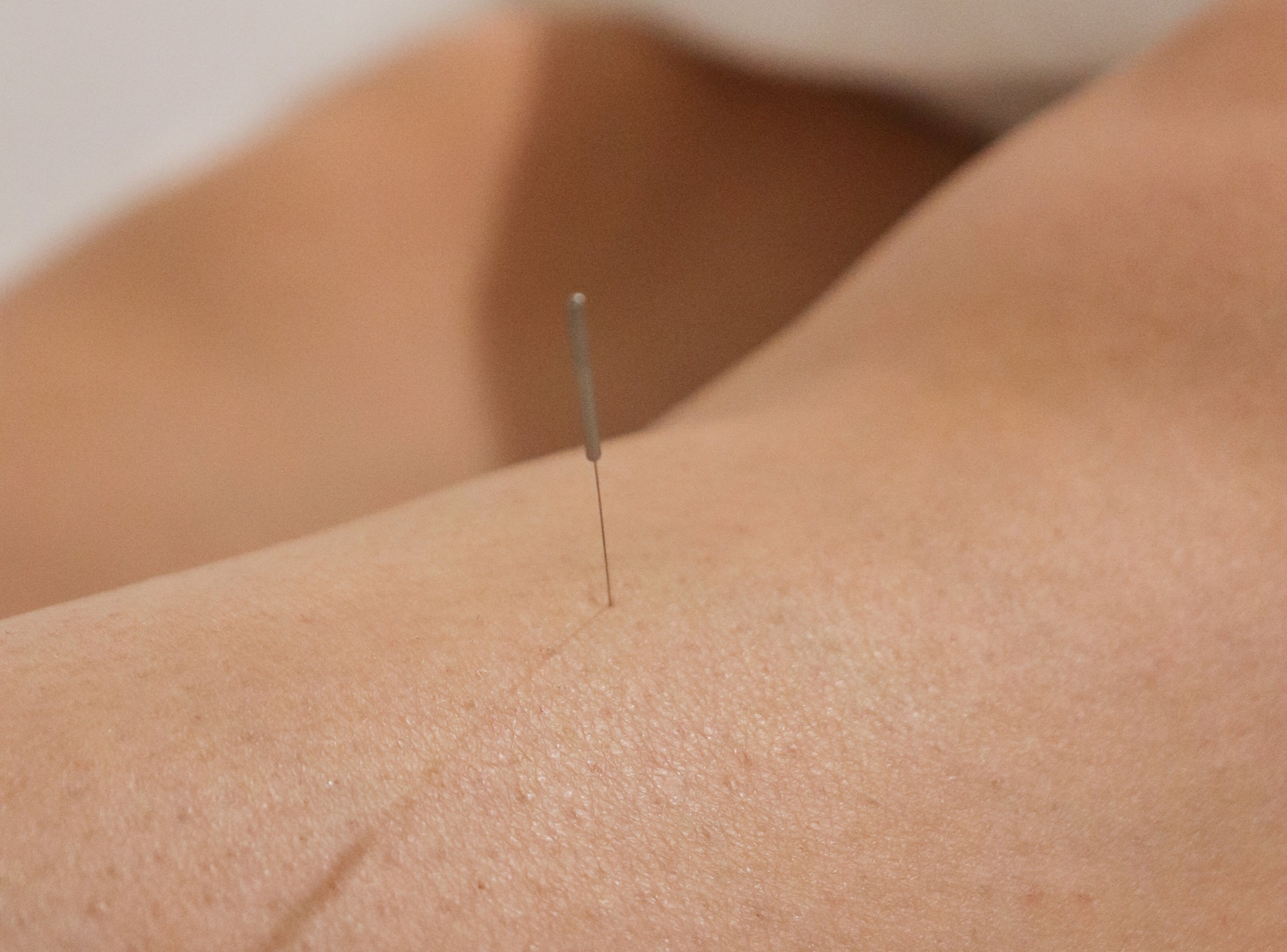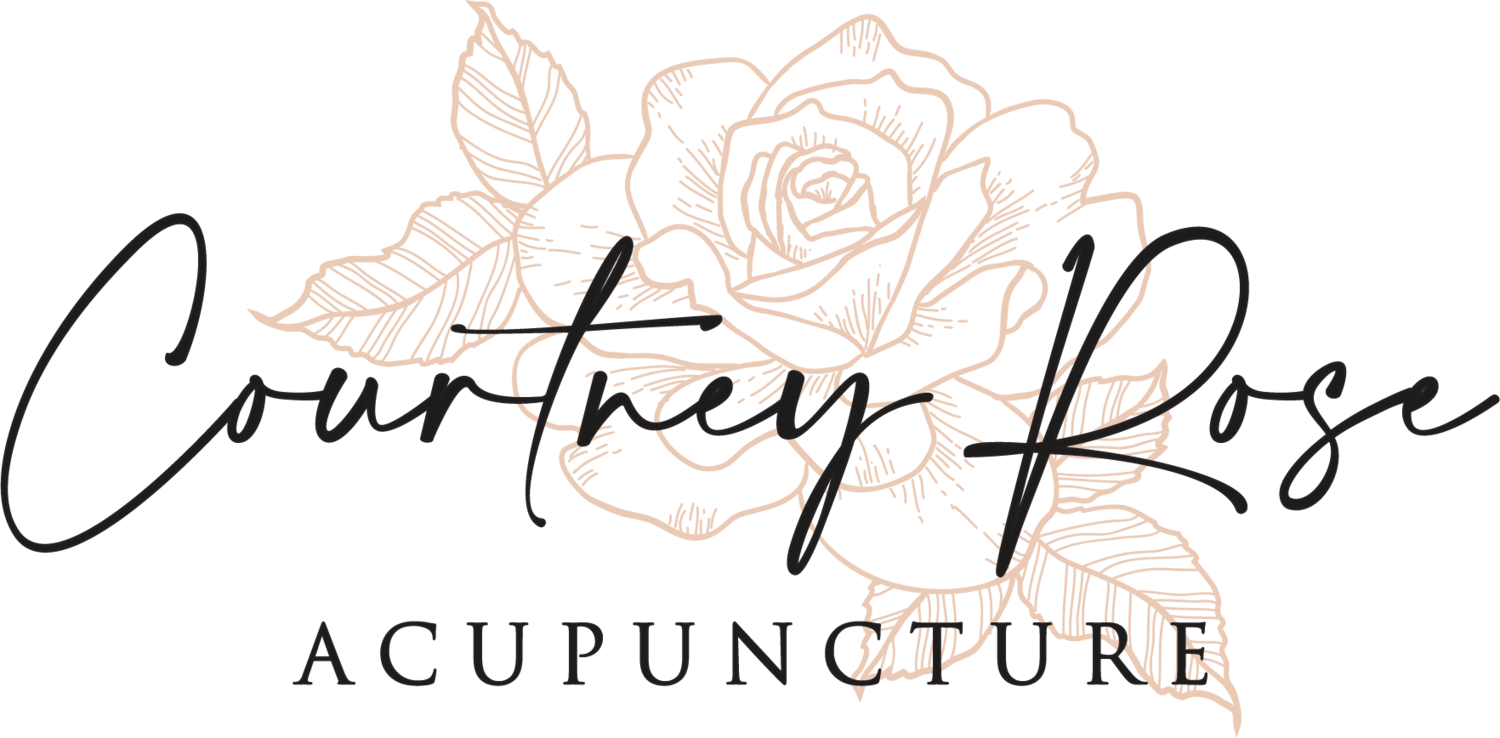Traditional Acupuncture
Medicine that focuses on you as a whole.
Acupuncture is the practice of placing whisker-thin needles into the skin at specific points on the body to obtain proper quality, quantity and balance of blood and Qi; the vital energy in all living things. Qi and blood reside in channels that flow throughout the entire body and provide nourishment to all tissues, just as water resides in a river and provides nourishment to all plants along the bank. Acupuncture is virtually pain free and, in fact, many people end up taking a nap while they lay with the needles in them.
All acupuncture facials include classic fire cupping when indicated for each client.
Initial $180 / Follow-up $120
Acupuncture is great for:
Sleep
Balancing Mood
Stress/Anxiety
Migraines/Headaches
Digestive Disorders
Menstrual Disorders
Long Covid
Pain Management
Immune Support
Fertility
The theory behind acupuncture
In Traditional Chinese Medicine (TCM), health is achieved through balancing Yin and Yang while disease is caused by an imbalance of the two. Yin represents the cold, slow or passive principle while Yang represents the hot, excited or active principle. This imbalance leads to a blockage in the flow of blood and Qi; the vital energy or life force proposed to regulate a person's spiritual, emotional, mental, and physical health. Qi and blood flow throughout the entire body
via channels (or meridians) and provide nourishment to all tissues. When there is an imbalance causing a blockage, a disease process begins due to the lack of nourishment to certain areas of the body. Qi and blood can be unblocked and Yin and Yang become balanced through the use of acupuncture at certain points on the body that exist on the channels. According to TCM, health is achieved by maintaining the body in a "balanced state".







Phases of care
There are 3 distinct phases of care when working with an acupuncturist to get relief from your current symptoms.
-
This phase of treatment gets you feeling better faster and is considered to be the symptomatic phase. Each visit builds upon the last, ultimately allowing for complete relief of what you initially sought treatment for. The amount of visits and time between each visit depends on a number of factors, some of them being the severity of the condition (how far the imbalance is), your age, diet and lifestyle.
-
As you begin to get relief from your symptoms the time between each treatment will become further apart. It is important to continue monthly routine tune-up visits to maintain overall well-being. This phase is called the restorative phase. Although you may no longer be experiencing your initial symptoms, the underlying cause that led to your problem may not be completely resolved and something simple could cause a relapse.
-
The final step of care is the preventative phase. This not only provides the support for all the progress you have made but also helps to prevent other disease processes from occurring by catching little problems before they become big ones. As the regular wear and tear of life will knock us out of balance, routine tune-up visits to your acupuncturist will help to restore that balance and keep you feeling your best.
What to expect during an acupuncture treatment
-
You will be asked to fill out some forms about your current and past medical history as well as any supplements and pharmaceuticals you may be currently taking.
After reviewing your chart, we will discuss the current issue that brought you in for treatment as well as the condition of other health factors such as your sleep, appetite, digestion, etc. This gives a well rounded picture of your current state of health.
I will then ask to see your tongue, check your pulse and palpate your abdomen to further understand any underlying issues.
Each of these three areas contains a microsystem that represents the state of the internal organs and the channels associated with those organs.
-
Whisker-thin needles will be placed in various spots on the body to help bring you closer to a state of balance.
Most needles are not felt on insertion, however there can be a little pinch with the insertion of some. Sensations to be expected locally are warming, dull achy, radiating or nothing.
You will then be left to rest as the needles need to sit for 10-25 minutes. Many people end up taking a little nap at this point.
At the end of the treatment, the needles will be removed.
-
You may feel a little sleepy because we have put the body to work, so it's important to listen to what your body tells you and drink plenty of water the rest of the day.
Most people notice a reduction in symptoms within 24 hours that will last for a few days or months depending on your condition.
-
How you respond to your first treatment will help gauge the amount you could benefit from in the future.
If symptoms return to their original state, then you have gone too long between treatments, as each treatment builds on the last.
Generally, two to three treatments will be needed in the first one to two weeks. As your results last longer, more time can go between care.
Once we have reached our goals for care, sessions continue with monthly tune-up visits for maintaining results and preventing new concerns from popping up.
-
It’s best to wear loose fitting clothing, as many areas on the body will need to be accessed. We understand sometimes this does not occur so we have draping available as well.




